Research projects
CRISPNESS
Project PID2023-146056NB-C21. AGB and post-AGB circumstellar envelopes: Companion's Role In ShaPing Nebulae of Evolved StarS
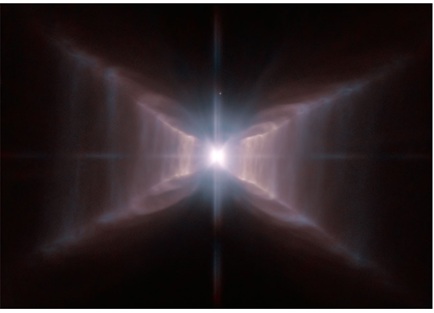
The CRISPNESS research project (OAN/IGN, managed by the CNIG), aims to study the late evolution of low and intermediate mass stars, the most abundant in the galaxy, focusing on the intense mass losses they undergo during the AGB phase. These mass losses generate circumstellar envelopes (CSEs), usually spherical, which subsequently give rise to pre-planetary and planetary nebulae (pPNe and PNe). However, most of these nebulae are not spherically symmetric, suggesting the influence of companion stars that, by forming accretion disks, generate bipolar winds capable of deforming the AGB envelope. Although this paradigm is fairly well accepted, there are still many unknowns: not enough binaries are identified in the previous phases, not all the mass lost in the AGB phase is detected, and the type of interaction that produces the complex structures observed is not well understood. This project aims to shed light on some of these topics by improving our statistical knowledge about binary systems in the AGB, pPN and PN phases, studying envelopes suspected of hosting binaries, analysing pPNe with different linear momenta, and observing iconic objects. Several observational techniques will be used, both at radio waves and at other wavelengths, new tracers and improved modeling tools, with special emphasis on the characterization of jets and rotating disks. CRISPNESS is coordinated with the INSIGHTS project (CAB, INTA/CSIC) forming the “Madrid Evolved Star Outflows Network (MESÓN)”. CRISPNESS, grant PID2023-146056NB-C21, is funded by MICIU/AEI/10.13039/501100011033 and by ERDF/EU.
EVENTs
Project PID2019-105203BG-C21. Mass loss, circumstellar envelopes, and the role of binaries in evolved stars.

The objective of this project is to gain knowledge of the mass loss mechanism and the properties of the resulting envelopes and nebulae in the latest stages of the evolution of intermediate mass stars. We will focus on three main aspects: a) to characterize the properties of the CSEs, the winds, of AGB and post-AGB stars, specially their innermost shells where the asymmetry in the AGB phase and the collimation of the pAGB jets must be seeded; b) to directly probe and characterize the fast-bipolar pAGB mass loss, the jets, by means of their free-free continuum and RRL emission, and optical spectroscopy; c) to link the properties of the winds and jets to the presence of binary systems directly or indirectly, by detecting the compact companion or its accretion disk, its gravitational pull on primary AGB/pAGB or in the wind of the primary. EVENTS is part of the coordinated research project NEBULAE WEB (eNvelopes and nEBULae of Agb stars and bEyond: Winds, jEts and Binaries). EVENTS research project, grant PID2019-105203BG-C21, is funded by MICIU/AEI/10.13039/501100011033.
XGALGAS
Project PID2022-138560NB-I00. A multi-scale/multi-wavelength view of the gas cycle in galaxies.
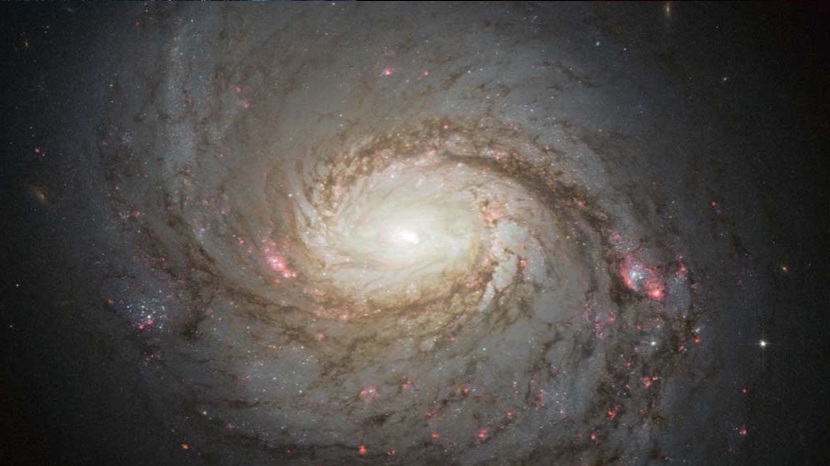
The study of molecular gas is key to understanding the formation and evolution of galaxies in the Universe. This research project aims to deepen our understanding of the physical processes that regulate the gas cycle and the evolution of galaxies over a wide range of spatial scales using high-resolution observations with first-class astronomical instrumentation. These observations include ALMA, NOEMA, IRAM's 30 m telescope and the JWST space telescope, among others. In particular, we seek to deepen the understanding of the phenomena of active nuclei, star formation and the role of the environment. We gratefully acknowledge the support of project PID2022-138560NB-I00, funded by MICIU/AEI/10.13039/501100011033 and by FEDER, EU.
AGN-EHE-II-4
Project PID2019-106027GA-C44. ALMA's perspective on the gas cycle in active galaxies.
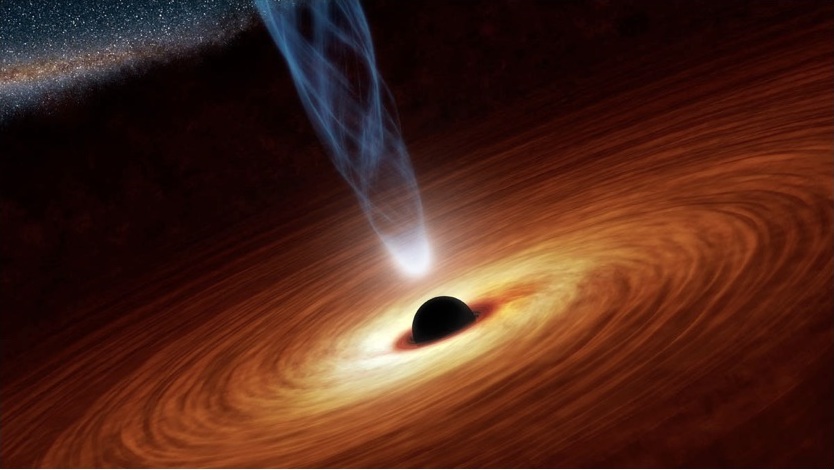
The coordinated project AGN-EHE-II-4 seeks to deepen the understanding of the phenomenon of active galactic nuclei (AGN) and its impact on the evolution of galaxies. It involves teams from the OAN, IAA, IAC and UB, which complement each other from an observational and theoretical perspective. The subproject “The ALMA perspective on the gas cycle in active galaxies” of the OAN aims to approach the AGN phenomenon from the molecular gas point of view. We have privileged access to a set of observations through PHANGS, an extensive ALMA program, and the NUGA-ALMA and GATOS-ALMA consortia. We will use these unique observations to study how AGNs affect the properties of the molecular gas in the host galaxy and the ability of the gas to form stars. We gratefully acknowledge support from project PID2019-106027GA-C44, funded by MCIN/AEI/10.13039/501100011033.
AxiN
The surge of axial symmetry in evolved star nebulae

The Axin Project aims to advance our understanding about the complex physical structures which can be observed in planetary nebulae. These interesting structures appear in the final evolutionary stages of spherically symmetric objects like the Sun. Particularly, we are interested in clarifying the role played by the presence of companion stars in the formation of axial structures, which are often observed in the planetary nebulae phase.
SFERA
Star formation on multiple spatial scales in the ALMA era
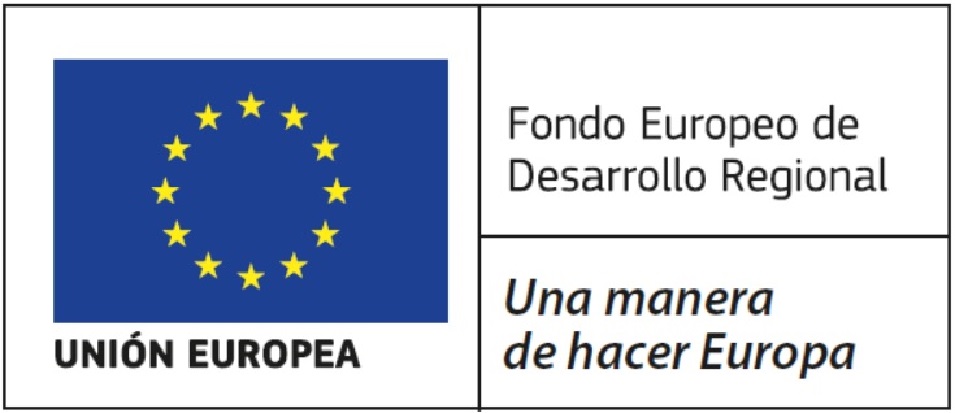
The SFERA project aims to explore some of the problems in star formation involving multiple spatial scales that could not be addressed so far due to technical limitations. By combining the use of single antennas, such as the IRAM 30m and Yebes 40m telescopes, with the use of the recently inaugurated ALMA interferometer, we hope to advance the study of bipolar flows produced by protostars, the fragmentation and formation of filaments/fibres in molecular clouds, and the role of dense gas in star formation on galactic scales. Project AYA2016-79006-P funded by MCIN/AEI/10.13039/501100011033/ and the European Regional Development Fund (FEDER).
EMPIRE
The EMIR Multiline Probe of the ISM Regulating Galaxy Evolution.

EMPIRE is the first wide-field study targeting multiple emission lines focused in the dense molecular gas of nine nearby galaxies with moderate star formation rates. The high sensitivity observations obtained by EMPIRE using the IRAM 30 meter telescope will allow: (1) to determine the distribution of gas densities and explore its relation to the environment within each galaxy disk; (2) to establish how the star formation efficiency of dense gas depends on the density distribution within and across the galaxies which make up the sample.
GATOS
Galactic Activity, Torus and Outflow Survey
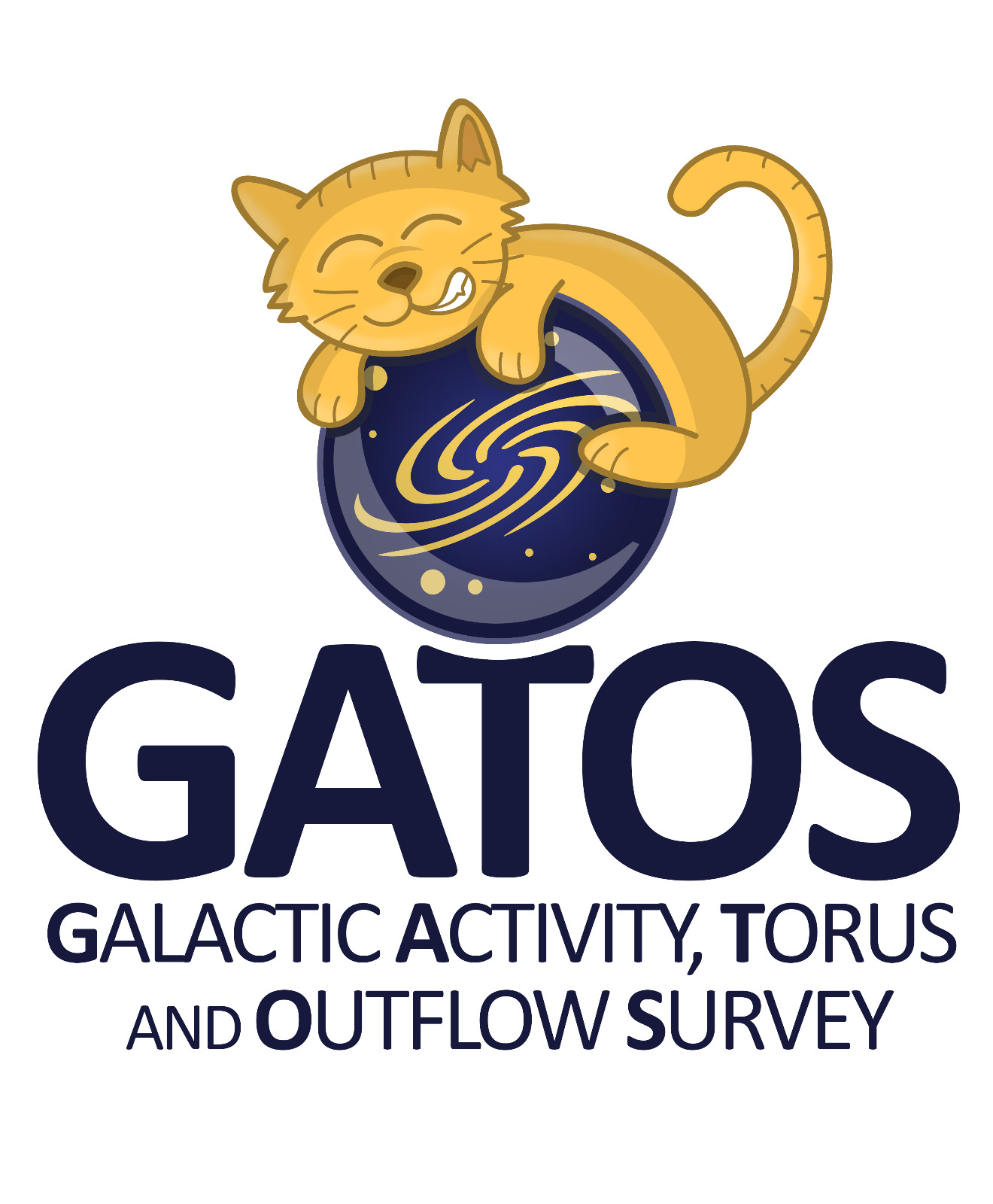
The GATOS GATOS project assembles a multidisciplinary team of astronomers who studies the physical processes which take place in the active galactic nuclei. This project uses information from millimeter wavelength observations obtained by the ALMA interferometer, optical observations from GTC and VLT as well as infrared instrumentation available in the near future with JSWT (~2021).
NUGA
NUclei of Galaxies
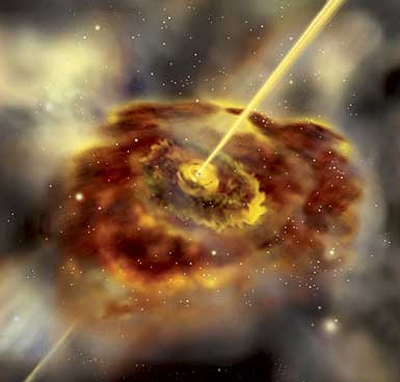
The NUGA Project studies the transfer mechanisms of the gas angular momentum in the discs of a sample of active galaxies in the local universe. This project uses high spatial resolution observations from radio interferometers such as NOEMA and ALMA, operating in the millimeter wavelength range.
The team proyect.
PHANGS
Physics at High Angular resolution in Nearby GalaxieS

PHANGS is a big collaboration whose goal is to understand the relationship between molecular gas physics and star formation on small scales, and link it to the galactic structure and evolution. Combining millimeter wavelength range facilities (ALMA, IRAM NOEMA) and optical instruments (VLT/MUSE) with multiwavelength observations, PHANGS aims to gather an extensive observational database to address fundamental questions in the nearby galaxy population. See video proyect.
PHIBSS2
IRAM Plateau de Bure High-z Blue Sequence Survey
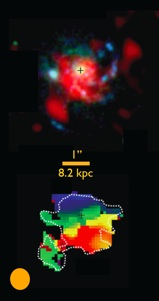
PHIBSS2 is a legacy project performed with the PdBI/NOEMA interferometer, which investigates the evolution of galaxies in the early universe. These observations explore the content and the kinematics of molecular gas in a sample of galaxies located in the main sequence around a time when star formation reaches its maximum value throughout the history of the universe.
See team proyect.
VERTICO
The Virgo Environment Traced in CO Survey
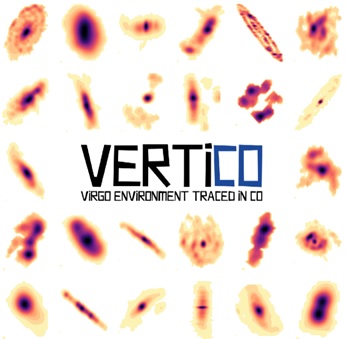
VERTICO survey is an ongoing ALMA Large Program that is revealing the effects of environment on galaxy evolution in unprecedented detail by mapping the molecular gas, as the raw fuel for star formation, in 51 Virgo Cluster galaxies. VERTICO aims to make progress on key outstanding questions about how environment drives galaxy evolution and to understand the dominant mode of influence on galaxies.
TIMER
Time Inference with Muse in Extragalactic Rings

TIMER is a research programme being conducted by an international team of experts aiming at establishing when in cosmic history galactic discs became dynamically mature. Discs reach this state when they are dynamically supported by differential rotation and their self-gravity is important. For this, we are exploiting VLT/MUSE observations of 21 nearby, massive barred galaxies.
SKA
The Cradle of life
The SKA will image the thermal emission from dust in the habitable zone in unprecedented detail. In particular, the SKA will show where dust evolves from micron-sized interstellar particles to centimetre-sized and larger “pebbles”, the first step in assembling Earth-like planets. Giant protoplanets can open up nearly empty gaps in the disc material, revealing their presence, and they may also drive large-scale spiral waves through the disc. Because orbital times in the inner disc are short, just a few years, observations made over time can track the evolution of these features to discern the formation mechanism of different types of planets.
ORION-4D
Towards a unified theory of low- and high-mass star-formation

The ORION-4D The ORION-4D survey aims to investigate the dynamical, physical, and chemical properties of the gas in the filamentary Orion A cloud. This project combines a new set of state-of-the-art single-dish (IRAM30m, EFF100m, and APEX12m) and interferometric (ALMA) observations for >400 hours of telescope time.
The ORION-4D survey will produce a unique set of large-scale, high-sensitivity molecular line observations of the entire Orion A cloud. Its wide spectral coverage includes observations of 30 molecular species (e.g., C18O, HCN, N2H+, NH3, etc), sensitive to different physical and dynamical properties of the gas (density, temperature, column density, chemical composition, velocity structure...). The unprecedented quality, resolution, and extension of the ORION-4D data will allow to simultaneously analyze the kinematic (2+1D) and chemical (+1D) properties of the gas at large-scales within this massive filamentary cloud.
CHEX-MATE
The Cluster HEritage project with XMM-Newton - Mass Assembly and Thermodynamics at the Endpoint of structure formation
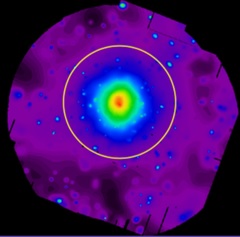
CHEX-MATE is a three mega-second Heritage Programme to obtain X-ray observations of a sample of 118 galaxy clusters detected by Planck through the Sunyaev-Zel'dovich effect. The programme aims to study the ultimate products of structure formation in time and mass. It is composed of a census of the most recent objects to have formed, together with a sample of the highest-mass objects in the Universe. The programme will (1) yield an accurate vision of the statistical properties of the underlying population, (2) measure how the gas properties are shaped by collapse into the dark matter halo, (3) uncover the provenance of non-gravitational heating, and (4) resolve the major uncertainties in mass determination that limit the use of clusters for cosmological parameter estimation.
DEGAS
The Dense Extragalactic GBT+Argus Survey

DEGAS. Almost all theories of star formation have gas density as a key variable, while observations in the Milky Way and nearby galaxies suggest a close link between dense gas and star formation. Early unresolved observations of nearby galaxies suggested a simple relationship between the amount of dense gas and the amount of star formation in a galaxy. Recent resolved surveys of dense molecular gas in nearby galaxies, however, have shown that the dense gas fraction and the dense gas star formation efficiency varies within individual galaxies and among different galaxies. Unfortunately, the faintness of the primary dense gas tracers (HCN and HCO+) mean that these studies have been limited to small (5-10) samples of normal galaxies. The Dense Extragalactic GBT+Argus Survey (DEGAS) aims to map the dense molecular gas in the central 2arcmin of 36 nearby galaxies at moderate (10arcsec) resolution. When complete, it will be the largest survey of dense molecular gas to date.
INSPIRING
INterferometric Survey of Post-AGB binary Interaction with their RING.
INSPIRING is a VLTI Large Programme to image circumbinary disks around evolved stars, and investigate binary stellar evolution through the study of post-AGB binaries. The near-infrared interferometric technique offers the opportunity to resolve the building blocks (circumbinary disk inner rim, inner binary, accretion signatures) of the selected targets, with a morphological complexity that geometrical models are not able to reproduce. Using VLTI continuum imaging of 11 targets we will: 1) reveal the 3-D morphology of the disk inner rim and constrain disk/binary interactions, 2) obtain the absolute distances, luminosities, and masses of the systems, 3) look for direct evidence for accretion from the circumbinary disk, 4) confirm the presence of a circum-secondary accretion disk in the whole sample, 5) study the origin of extended flux component, and 6) reveal a disk evolutionary sequence. Combining recent advances in aperture synthesis techniques with state-of-the-art 3-D radiative transfer models of circumbinary disks will give us a sharp view on the structure and evolution of these second generation protoplanetary disks.
CONquest
CONquest is an ongoing ALMA survey to find the most obscured galaxy nuclei in the local Universe (D < 300 Mpc for ULIRGs, D < 75 Mpc for LIRGs and 10 < D < 20 Mpc for galaxies with 1E10 Lsun < LIR < 1E11Lsun). To probe deep enough in highly obscured objects, CONquest uses rotational line emission from vibrationally excited HCN. These vibrational states of HCN are efficiently excited by the intense mid-infrared emission that is present deep inside the Compact Obsucred Nuclei (CONs). The rotational lines inside the vibrational states are then emitted at (sub)millimeter wavelengths where the obscuring dust can more easily be penetrated. CON-quest first results showed that approximately a quarter of the LIRGs host possible CONs indicating that they represent a more long lived, common, and important population of galaxies than previously thought.
NOEMA3D
NOEMA3D NOEMA3D is a NOEMA survey that aims at obtaining a comprehensive census of the molecular gas distribution and kinematics of massive main-sequence star forming galaxies at the peak and winding down of galaxy formation activity. For that purpose NOEMA3D is carrying out spatially resolved interferometric imaging of the distribution and kinematics of the molecular ISM in a well-characterized sample of ~50-60 massive star-forming galaxies (SFGs) near and after the peak of galaxy growth at z~0.5-2.0, and later in the program at very high redshifts. NOEMA3D will address a wide range of topics in baryon cycling, star formation, feedback and quenching that are linchpins in the cosmic evolution of SFGs.
ALCHEMI
The ALMA Comprehensive High-resolution Extragalactic Molecular Inventory
ALCHEMI is an ALMA large program aiming at obtaining the most complete spatially resolved molecular inventory towards a starburst environment. For that purpose, ALCHEMI is carrying out a broad band beam-matched spatially-resolved unbiased spectral scan towards the central molecular zone of the prototypical nearby starburst galaxy NGC253. The immediate objectives of ALCHEMI are defining a uniform molecular template for extragalactic starburst environment where systematic uncertainties are minimized and accurately constraining the physical conditions and chemical abundances of individual molecular cloud complexes.
SHAPE

SHAPE is a morpho-kinematic modeling and reconstruction tool for astrophysical objects. With this software you can quickly construct 3D model structures and directly compare them with data in order to assist in the interpretation of observations. From such a 3D structure model with a model velocity field and emission properties, it generates images and position-velocity (pv) diagrams, channel maps, light echoes, light curves and one dimensional spectral line shape, to mention a few. Wavelength dependent radiation transfer for line emission and scattering on dust is also possible.
GEMS
Gas phase Elemental abundances in Molecular cloudS
GEMS. The goal of this IRAM large program is to determine the S, C, N and O elemental abundances, and the gas ionization degree as a function of visual extinction. These parameters are essential ingredients for chemical models and for cloud collapse simulations, because they govern the gas cooling and its coupling with the magnetic field. Hence, they are of paramount importance for star formation galactic studies. From the chemical point of view, this information is of paramount importance to derive the chemical composition of the solid grains that will be the seed of future planets. As an intermediate product, we will provide an unprecedented set of molecular data in dark clouds.
